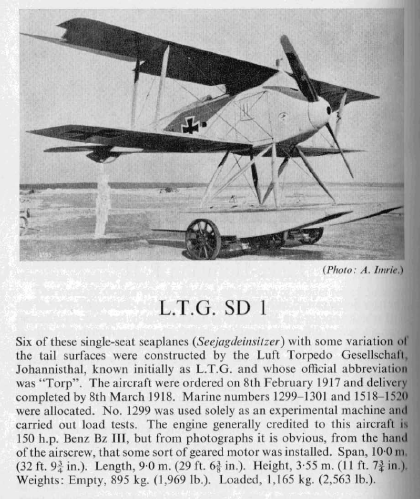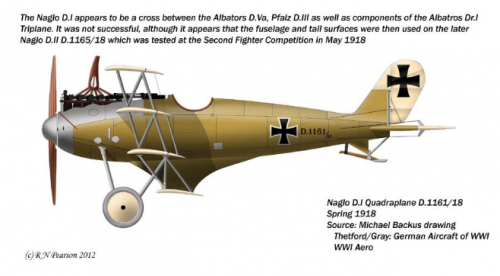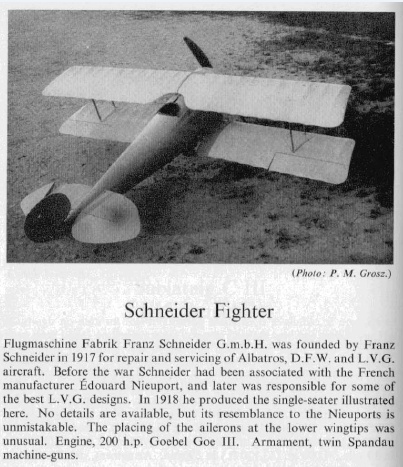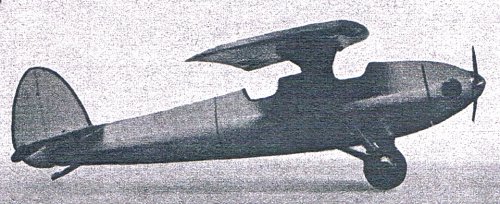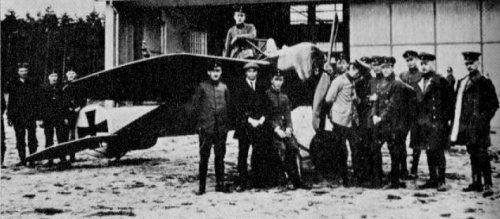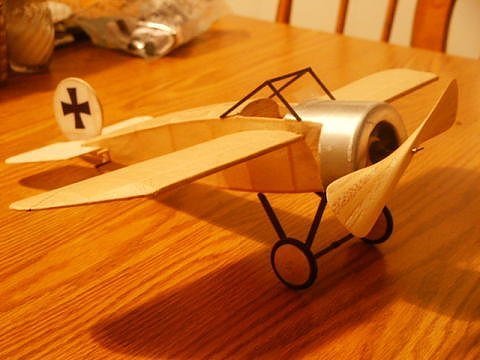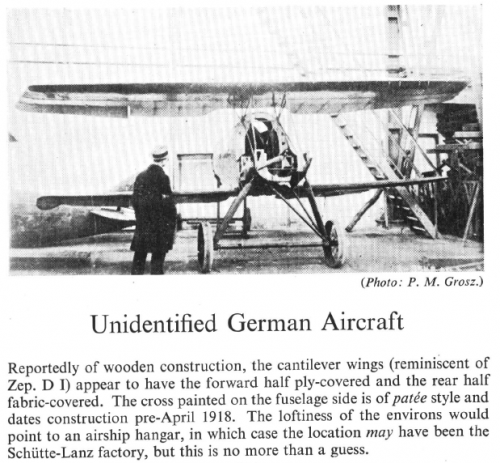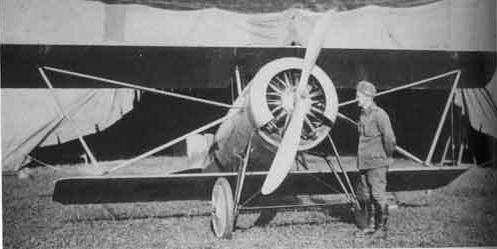You are using an out of date browser. It may not display this or other websites correctly.
You should upgrade or use an alternative browser.
You should upgrade or use an alternative browser.
German WW1 Fighters and Recce Aircraft Prototypes and Projects
Tuizentfloot
ACCESS: Secret
- Joined
- 9 May 2010
- Messages
- 270
- Reaction score
- 152
Germany had three Kaiserliche Werften (Danzig-Putzig, Wilhelmshafen and Kiel), state owned shipyards. Their main task was building, maintenance and repair of Navy ships. At the head of each Werft was an Oberwerftdirektor, a high ranking naval officer (Kapitän zur See or Konteradmiral).
During WWI a limited number of aircraft was built by each of the three shipyards, but aircraft building was of very secondary importance.
During WWI a limited number of aircraft was built by each of the three shipyards, but aircraft building was of very secondary importance.
Tuizentfloot
ACCESS: Secret
- Joined
- 9 May 2010
- Messages
- 270
- Reaction score
- 152
Indeed own designs, and mostly trainers (B types).
Tuizentfloot
ACCESS: Secret
- Joined
- 9 May 2010
- Messages
- 270
- Reaction score
- 152
1. Concerning LFG
Luft-Fahrzeug-Gesellschaft mbh (of “Roland” fame) had three production centers in WWI: Berlin (Adlershof, and later Charlottenburg), Stralsund on the Baltic coast, and Bitterfeld near Halle. So three production centers, but only one single company, LFG.
The production center of Bitterfeld built in the first place Parseval airships, but also seaplanes (or at least parts of them). Stralsund built seaplanes (or assembled them form parts built at Bitterfeld).
All the Roland planes are described in English in the recent (2014) Roland Aircraft of WWI by Jack Herris.
Officially only the LFG landplanes bore the name Roland. The seaplanes LFG built in WWI were mostly licence built Friedrichshafen or Sablatnig, and only four own projects.
These four were:
W (alternatively called WD – see Kroschel): single seat fighter floatplane, based on the D I and with Daimler D III. Three prototypes ordered, but only one built.
W1: two-seater on floats based on the Albatros C Ia (licence built by LFG) with Benz Bz III. One built, Marine Nummer 509. Simply called Seeaufklärer by Lange or B-Typ by Nowarra.
W16: two-seater of floats in the streamlined LFG style with Daimler D III (Lange) or D IV (Owers). One built, Marine Nummer 943.
V19: U-Boot plane with Oberursel UB III. One built at the end of the war.
2. Concerning the LTG SD 1
Sorry, my dear hesham, I have no more information than your scan from Owen & Thetford. The information from Lange and others is very scant.
One remark, the designation SD 1 by Owen & Thetford is not sure. Lange uses the designation FD 1, and Nowarra and Kroschel 5D1…
Luft-Fahrzeug-Gesellschaft mbh (of “Roland” fame) had three production centers in WWI: Berlin (Adlershof, and later Charlottenburg), Stralsund on the Baltic coast, and Bitterfeld near Halle. So three production centers, but only one single company, LFG.
The production center of Bitterfeld built in the first place Parseval airships, but also seaplanes (or at least parts of them). Stralsund built seaplanes (or assembled them form parts built at Bitterfeld).
All the Roland planes are described in English in the recent (2014) Roland Aircraft of WWI by Jack Herris.
Officially only the LFG landplanes bore the name Roland. The seaplanes LFG built in WWI were mostly licence built Friedrichshafen or Sablatnig, and only four own projects.
These four were:
W (alternatively called WD – see Kroschel): single seat fighter floatplane, based on the D I and with Daimler D III. Three prototypes ordered, but only one built.
W1: two-seater on floats based on the Albatros C Ia (licence built by LFG) with Benz Bz III. One built, Marine Nummer 509. Simply called Seeaufklärer by Lange or B-Typ by Nowarra.
W16: two-seater of floats in the streamlined LFG style with Daimler D III (Lange) or D IV (Owers). One built, Marine Nummer 943.
V19: U-Boot plane with Oberursel UB III. One built at the end of the war.
2. Concerning the LTG SD 1
Sorry, my dear hesham, I have no more information than your scan from Owen & Thetford. The information from Lange and others is very scant.
One remark, the designation SD 1 by Owen & Thetford is not sure. Lange uses the designation FD 1, and Nowarra and Kroschel 5D1…
Tuizentfloot
ACCESS: Secret
- Joined
- 9 May 2010
- Messages
- 270
- Reaction score
- 152
Possibly, and this is could be the famous Ursinus floatplane (Marine Nummer 782). See our discussion of 1 September 2014. Built by Flugmaschine Rex (Lange), or by Gotha (Herris), or by LTG…? Gray & Thetford don’t mention where it was built. So, still another German mystery…
In WWI LTG built only two own projects, the FD 1/5D 1/SD 1 and an undesignated biplane (not a seaplane) of which a few were built. And that’s all the information Lange can give…
In WWI LTG built only two own projects, the FD 1/5D 1/SD 1 and an undesignated biplane (not a seaplane) of which a few were built. And that’s all the information Lange can give…
- Joined
- 26 May 2006
- Messages
- 34,818
- Reaction score
- 15,698
hesham said:the Naglo D.I was a single seat quadruplane fighter (1161/18),actually built.
Maybe a Naglo D.I speculative drawing.
https://www.facebook.com/Naglo-Bootswerft-Aircraft-222598187820258/
Attachments
- Joined
- 26 May 2006
- Messages
- 34,818
- Reaction score
- 15,698
My dear Tuizentfloot,
after you explained that,there was three Pheonix companies,and one of them was
from Germany,please can I ask you about those mysteries designations,maybe
they related to Germany one,and they called Pheonix aircraft;
- Biplane with 350 hp engine
- Monoplane (no other details)
- Type-13 recce biplane
- Fighter with rotary engine
- Parasol Fighter with rotary engine
after you explained that,there was three Pheonix companies,and one of them was
from Germany,please can I ask you about those mysteries designations,maybe
they related to Germany one,and they called Pheonix aircraft;
- Biplane with 350 hp engine
- Monoplane (no other details)
- Type-13 recce biplane
- Fighter with rotary engine
- Parasol Fighter with rotary engine
Tuizentfloot
ACCESS: Secret
- Joined
- 9 May 2010
- Messages
- 270
- Reaction score
- 152
Please a little patience, my dear hesham, I do not have much time the following days, but I will answer as soon as possible.
Tuizentfloot
ACCESS: Secret
- Joined
- 9 May 2010
- Messages
- 270
- Reaction score
- 152
The only information I have about these five projects of the WWI Phönix-Flugzeugwerke AG comes from Grosz, Haddow & Schiemer, Austro-Hungarian Army Aircraft of World War One (1993), p. 85:
1. Biplane with 350 hp engine
1916 project with Daimler 350 hp, and another 1918 project with Daimler 345 hp. Neither project completed.
2. Monoplane (no other details)
1917 project rejected by the military.
3. Type-13 recce biplane
Two-seater with C I configuration, but smaller, and with 230 hp Hiero. Possibly built and flown in 1918.
4. Fighter with rotary engine
Not completed 1918 project of a biplane fighter with 150 hp Le Rhône(St). An engine for this project was ordered. The Rhône engine was built by the Österreichische Waffenfabrik AG in Steyr.
5. Parasol Fighter with rotary engine
1918 project by Eduard Zaparka, who was then chief designer at Phönix, and with a rotary engine (type?). Prototype nearly complete at the end of WWI?
For the record, the 1920s German Phönix-Flugzeugbau (and the Austrian Österreichische Phoenix-Flugzeugwerft GmbH) built only low powered light sport aircraft and had no relation to the WWI Phönix-Flugzeugwerke, that ceased all activities at the end of WWI.
I give the complete list of the aircraft built by these very small companies.
Phönix-Flugzeugbau in Düsseldorf-Lauhausen, Germany.
LF4: 1927 low wing light sport plane, 1 built and sold (without engine) to an American customer
L2 Meteor: 1928 light sport biplane evolved from the L1 earlier built by Meteor-Flugzeugbau, 1 built with ABC Scorpion, 35 hp
L2a: 1 built with Salmson AD9, 40 hp
L2b: with Salmson AD9 for Austrian construction
L2c: with Siemens Sh13 for Austrian construction
L2d: 1 built with Salmson AD9
L2e: 1 built with Hirth HM60
L2g: with Siemens Sh14 for Austrian construction
Österreichische Phoenix-Flugzeugwerft GmbH in Wöllersdorf, Austria.
Offered the construction of the following German L2 variants (some with another engine than the German original):
- L2b with Salmson AD9
- L2c with Siemens Sh13
- L2d with Armstrong-Gennet, 80/88 hp
- L2e with Walter NZ-70
- L2g with Siemens Sh14
Six L2c and two L2g were built. Of the other variants none.
For the sake of completeness, around 1990 there was another Austrian constructor named Phönix Aircraft Flugzeugbau Ges.m.b.H. that built the Phönix Aircraft Kitfox 2 home-built. But that is not my area of interest...
1. Biplane with 350 hp engine
1916 project with Daimler 350 hp, and another 1918 project with Daimler 345 hp. Neither project completed.
2. Monoplane (no other details)
1917 project rejected by the military.
3. Type-13 recce biplane
Two-seater with C I configuration, but smaller, and with 230 hp Hiero. Possibly built and flown in 1918.
4. Fighter with rotary engine
Not completed 1918 project of a biplane fighter with 150 hp Le Rhône(St). An engine for this project was ordered. The Rhône engine was built by the Österreichische Waffenfabrik AG in Steyr.
5. Parasol Fighter with rotary engine
1918 project by Eduard Zaparka, who was then chief designer at Phönix, and with a rotary engine (type?). Prototype nearly complete at the end of WWI?
For the record, the 1920s German Phönix-Flugzeugbau (and the Austrian Österreichische Phoenix-Flugzeugwerft GmbH) built only low powered light sport aircraft and had no relation to the WWI Phönix-Flugzeugwerke, that ceased all activities at the end of WWI.
I give the complete list of the aircraft built by these very small companies.
Phönix-Flugzeugbau in Düsseldorf-Lauhausen, Germany.
LF4: 1927 low wing light sport plane, 1 built and sold (without engine) to an American customer
L2 Meteor: 1928 light sport biplane evolved from the L1 earlier built by Meteor-Flugzeugbau, 1 built with ABC Scorpion, 35 hp
L2a: 1 built with Salmson AD9, 40 hp
L2b: with Salmson AD9 for Austrian construction
L2c: with Siemens Sh13 for Austrian construction
L2d: 1 built with Salmson AD9
L2e: 1 built with Hirth HM60
L2g: with Siemens Sh14 for Austrian construction
Österreichische Phoenix-Flugzeugwerft GmbH in Wöllersdorf, Austria.
Offered the construction of the following German L2 variants (some with another engine than the German original):
- L2b with Salmson AD9
- L2c with Siemens Sh13
- L2d with Armstrong-Gennet, 80/88 hp
- L2e with Walter NZ-70
- L2g with Siemens Sh14
Six L2c and two L2g were built. Of the other variants none.
For the sake of completeness, around 1990 there was another Austrian constructor named Phönix Aircraft Flugzeugbau Ges.m.b.H. that built the Phönix Aircraft Kitfox 2 home-built. But that is not my area of interest...
- Joined
- 28 January 2008
- Messages
- 635
- Reaction score
- 511
The Bulldog was a side-by-side monoplane designed by Swede Villehad Forssman for Prince Friedrich Sigismund of Prussia. When the war started the design was offered to SSW as a reconnaissance machine. Two were built by Siemens-Schuckert, for the War Ministry,under Forssman's supervision. First example from late 1914 had a Mercedes D.I 100 hp motor. Second example had a Siemens-Halske Sh.I engine of 110 hp. Both rejected for poor flying qualities. Later refined and used as trials aircraft for the air launch of early missiles. The source below has several images of the two SSW examples. There is also a photo of the original Bulldog .
Source: Siemens-Schuckert Aircraft of World war I by Jack Herris (Aeronaut) ISBN 978-1-935881-23-0
Source: Siemens-Schuckert Aircraft of World war I by Jack Herris (Aeronaut) ISBN 978-1-935881-23-0
Tuizentfloot
ACCESS: Secret
- Joined
- 9 May 2010
- Messages
- 270
- Reaction score
- 152
The E IV was only a project, evolved from the E III
Tuizentfloot
ACCESS: Secret
- Joined
- 9 May 2010
- Messages
- 270
- Reaction score
- 152
You're welcome, my dear hesham.
And you beat me the first time, Су-27. I was just writing almost the same as your answer, and between my sources I also used the book by Jack Herris.
Of all the recent English language publications on German aircraft of WWI the series by Jack Herris is a must.
And you beat me the first time, Су-27. I was just writing almost the same as your answer, and between my sources I also used the book by Jack Herris.
Of all the recent English language publications on German aircraft of WWI the series by Jack Herris is a must.
- Joined
- 26 May 2006
- Messages
- 34,818
- Reaction score
- 15,698
richard
ACCESS: Top Secret
- Joined
- 1 May 2006
- Messages
- 578
- Reaction score
- 141
Google traduction of Wikipedia :
" Franz Schneider (born September 27, 1871 in Konstanz, † 24 May 1941 in Tokyo) was a German airplane pioneer.
Schneider learned mechanic and worked from 1894 to 1898 as an electrical engineer at Siemens-Schuckert in Nuremberg. Then he married Luisa Speyer. [1]
1906 appointed him Édouard Nieuport to running a factory for Magneto to Paris. His first here in 1909 built aircraft was destroyed in a flood. In 1910 he built an enclosed monoplane with 28 hp Nieuport two-cylinder, which reached 120 km / h. The following year he developed for the Gordon Bennett race a monoplane with 100-hp Gnome engine.
In 1911 he went as chief designer for airline (LVG) in Johannisthal, where he designed a biplane that a standard aircraft was 1913-1916. 1914, when he became a German citizen, he provided two machines to Japan. An order by the Swiss Federal Council was prevented by the outbreak of war. End of 1916, he and Romeo Wankmüller retired as managing director at the Carrier.
From the liquidated German Railroad Dining Car Company had acquired the facilities, and founded on January 22, 1917 his own work with about 125 employees, including Viktor Carganico. The supervision initiated Lieutenant Elchleb. Mainly front planes of Albatros, DFW and LVG were repaired. 1918, he developed a Jagdeinsitzer. Around 1922 he changed the company name from Franz Schneider flying machines works in Franz Schneider machinery works for the construction and sale of all types of machinery, especially construction of new railway cars. But the construction and sale of flying machines he offered.
In 1937, he went at the invitation of a Japanese general to Tokyo , where he died in 1941 ."
In 1932 , at the D.E.L.A (Berlin) , he showed a model of a two seats light plane , the Schneider FS 101 .
It remained a project …
" Franz Schneider (born September 27, 1871 in Konstanz, † 24 May 1941 in Tokyo) was a German airplane pioneer.
Schneider learned mechanic and worked from 1894 to 1898 as an electrical engineer at Siemens-Schuckert in Nuremberg. Then he married Luisa Speyer. [1]
1906 appointed him Édouard Nieuport to running a factory for Magneto to Paris. His first here in 1909 built aircraft was destroyed in a flood. In 1910 he built an enclosed monoplane with 28 hp Nieuport two-cylinder, which reached 120 km / h. The following year he developed for the Gordon Bennett race a monoplane with 100-hp Gnome engine.
In 1911 he went as chief designer for airline (LVG) in Johannisthal, where he designed a biplane that a standard aircraft was 1913-1916. 1914, when he became a German citizen, he provided two machines to Japan. An order by the Swiss Federal Council was prevented by the outbreak of war. End of 1916, he and Romeo Wankmüller retired as managing director at the Carrier.
From the liquidated German Railroad Dining Car Company had acquired the facilities, and founded on January 22, 1917 his own work with about 125 employees, including Viktor Carganico. The supervision initiated Lieutenant Elchleb. Mainly front planes of Albatros, DFW and LVG were repaired. 1918, he developed a Jagdeinsitzer. Around 1922 he changed the company name from Franz Schneider flying machines works in Franz Schneider machinery works for the construction and sale of all types of machinery, especially construction of new railway cars. But the construction and sale of flying machines he offered.
In 1937, he went at the invitation of a Japanese general to Tokyo , where he died in 1941 ."
In 1932 , at the D.E.L.A (Berlin) , he showed a model of a two seats light plane , the Schneider FS 101 .
It remained a project …
Attachments
Tuizentfloot
ACCESS: Secret
- Joined
- 9 May 2010
- Messages
- 270
- Reaction score
- 152
Schneider's D-Typ was a single bay wooden biplane with 1 x 200 hp Goebel Goe III. To improve climb performance the engine could be swiveled some degrees upwards. Build, but not tested. Source: Lange.
- Joined
- 26 May 2006
- Messages
- 34,818
- Reaction score
- 15,698
Nice Info my dear Tuizenfloot,
and can I ask about the designer,Mr. Hergt,which built a single seat shoulder-high-wing
monoplane,maybe a fighter,if he had anther aircarft or Projects ?.
http://flyingmachines.ru/Site2/Crafts/Craft29975.htm
and can I ask about the designer,Mr. Hergt,which built a single seat shoulder-high-wing
monoplane,maybe a fighter,if he had anther aircarft or Projects ?.
http://flyingmachines.ru/Site2/Crafts/Craft29975.htm
Attachments
Tuizentfloot
ACCESS: Secret
- Joined
- 9 May 2010
- Messages
- 270
- Reaction score
- 152
Concerning the Hergt monoplane, I'm afraid sources like Lange, Nowarra, … have only the same things to say as do Thetford & Gray… Empty weight 227 kg and max. speed 140 km/h (Lange). Nothing more to find about Diplom-Ingenieur F.D. Hergt… In any case it was a private venture.
- Joined
- 11 March 2006
- Messages
- 8,622
- Reaction score
- 3,772
In heshams source it is said, that it was "built at F.E.A. 1 Altenburg". That was the "Fliegerersatz-Abteilung"
"pilot replacement department", tasked with training of pilots and observers and stationed at Altenburg from
1916 onwards.
BTW, I don't think, that this design was a fighter, as neither performance, nor layout was adequate in 1918,
I think. Perhaps it was intended as a fighter trainer ?
"pilot replacement department", tasked with training of pilots and observers and stationed at Altenburg from
1916 onwards.
BTW, I don't think, that this design was a fighter, as neither performance, nor layout was adequate in 1918,
I think. Perhaps it was intended as a fighter trainer ?
Tuizentfloot
ACCESS: Secret
- Joined
- 9 May 2010
- Messages
- 270
- Reaction score
- 152
The intention of this private venture is not clear. It was flown by the well-known pre-war pilot Mauricio (Mario) Scherff, who flew as a volunteer on the Turkish side during the Balkan Wars.
Tuizentfloot
ACCESS: Secret
- Joined
- 9 May 2010
- Messages
- 270
- Reaction score
- 152
Unfortunately no...
- Joined
- 26 May 2006
- Messages
- 34,818
- Reaction score
- 15,698
Tuizentfloot said:Unfortunately no...
Hard to find my dear Tuizentfloot.
- Joined
- 26 May 2006
- Messages
- 34,818
- Reaction score
- 15,698
Tuizentfloot said:5. Parasol Fighter with rotary engine
1918 project by Eduard Zaparka, who was then chief designer at Phönix, and with a rotary engine (type?). Prototype nearly complete at the end of WWI?
My dear Tuizentfloot,
please can you give us a drawing or a picture to this experimental fighter ?.
Similar threads
-
-
Experimental ww1 fighters from Albatros and Siemens
- Started by T-50
- Replies: 12
-
Friedrichshafen Little Known Prototypes & Projects
- Started by hesham
- Replies: 16
-
LFG (Luft-Fahrzeug-Gesellschaft) Projects
- Started by hesham
- Replies: 21
-

